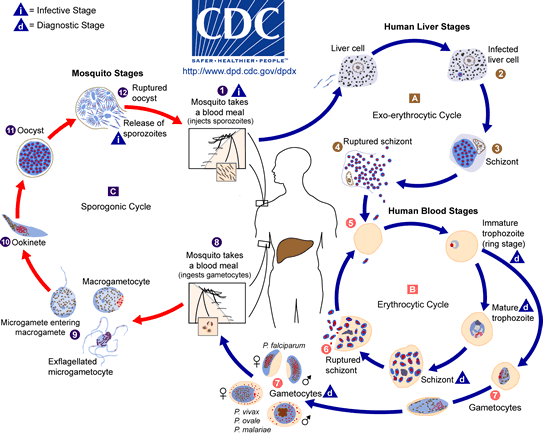QUESTION:
How does the malaria antigen test work? After how many days presence of malaria can antigens be detected in the blood ? Is it posible to detect antigens on the first day of fever ?
ANSWER:
The malaria antigen test works by detecting antigens in the blood which are released by the parasite. The antigens are usually LDH (lactate dehydrogenase) or HRP2 (Histidine-rich protein 2). If the test is in RDT (rapid diagnostic test) format, there is an antibody against one of the parasite antigens stuck onto the test strip. A tiny drop of blood (usually from a fingerprick) is placed in a well at one end of the test, and covered with a test buffer solution; as the patient’s blood migrates up the test strip, the parasite antigen will be captured by this antibody. The parasite antigen is then bound by another antibody which is coupled to colloidal gold, which will show up as a positive band on the test.
Detection of the malaria antigen in the blood depends on the sensitivity of the test and the parasitaemia (number of parasites) in the blood. If the parasitaemia is high enough it should be possible to detect antigen on the first day of fever.
